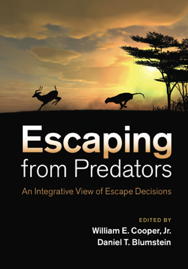Recent, current, and forthcoming projects
Marmots - evolution of social behavior and communication

Links:
- The Marmot Burrow
- The Marmots of RMBL
- Marmot Minutes (blog)
- Learn more about the Rocky Mountain Biological Laboratory (and a bit of marmot research) in this RMBL video
Popular Press:
- Science News,
- Science
- Natural History
- Los Angeles Times
- Audubon Magazine
- The Rocky Mountain News
- The Aspen Daily News
- KBUT Nature Notes-2008 radio interview
- The New York Times
- Glenwood Springs Post Independent
- University of Lousiana
- Monroe News
- KBUT Nature Notes 2011 radio interview
- Vanguardia, also see the special featurette about studying marmots included with the 15th Anniversary Edition release of the film Groundhog Day.
- Our long term research was featured in an article in The Scientist in July 2013.
- Aspen Public Radio broadcast two pieces about Team Marmot’s work: The Marmots of RMBL, and What Marmots Can Teach Us About Plastics.
- An old article from the Fort Scott Tribune I just discovered poking fun at RoboBadger…
Popular press for the PNAS heritable victimization article:
- Cosmos
- Discover
- Live Science
- New Scientist
- PhysOrg.com
- Science News
- Wired Science
- NPR’s 90-second Naturalist
Popular press about the marmot masculinization work:
Celebrate groundhog day long enough and the press comes! A fun article from the LA Times.
Our PRSB paper about heritable alarm calls was a hit in German speaking parts of the world
as was our PRSB paper about the delayed beneifts of play:
Marmots and marmot research featured in a long article in Men’s Journal about climate change and the end of skiing in Aspen, Colorado.
A fun interview about marmots and climate change on WBEZ-Chicago’s EcoMyths radio show.
Our Behavioral Ecology paper about how less popular marmots emit more alarm calls got some press in ScienceShots, and the Times Live.
A fun newspaper article about a couple who has created an amazing video archive of woodchuck behavior.
Dan and Tina’s social network work featured in a long feature in BioScience.
A wonderful video from 9NEWS (NBC Denver) about the soap opera (The book of marmot?!) that is our RMBL study.
Shorter winters have led to fatter marmots and a population explosion
 Popular press for the 22 July 2010 Nature cover story about how shorter winters have led to fatter marmots and a population explosion over the past decade includes:
Popular press for the 22 July 2010 Nature cover story about how shorter winters have led to fatter marmots and a population explosion over the past decade includes:
- The LA Times
- The NY Times
- Discovery News
- New Scientist
- The Telegraph
- Time Magazine
- Scientific American
- Wired Science
- USA Today
- AFP
- LiveScience
- Discover Magazine
- Eureka Alert
- PhysOrg
- The Christian Science Monitor
- CBS News
- Irish Times
- Planet Earth
- The Money Times
- AOL News
- The Denver Post
- and more! Listen to Arpat’s Nature PodCast interview and Dan’s NPR interview.
- And, don’t forget to read the News of The World to learn about Arpat’s summer vacations…
Talks:
- 5 March 2008: Utah State University–Ecology Center Seminar Series: Conservation behavior lessons from marmots
The evolution of escape behavior.
 Virtually all animals are vulnerable to predation at some point in their lives and a key response to predators is flight. Colleagues and I have generated large data sets in birds, mammals, and lizards to understand the evolution of escape behavior. Through many empirical studies and large-scale comparative studies and meta-analyses, we have identified key factors that explain variation in escape behavior. By identifying mechanisms that influence flight initiation distance, we are able to apply this knowledge to understanding human tolerance of wildlife.
Virtually all animals are vulnerable to predation at some point in their lives and a key response to predators is flight. Colleagues and I have generated large data sets in birds, mammals, and lizards to understand the evolution of escape behavior. Through many empirical studies and large-scale comparative studies and meta-analyses, we have identified key factors that explain variation in escape behavior. By identifying mechanisms that influence flight initiation distance, we are able to apply this knowledge to understanding human tolerance of wildlife.
